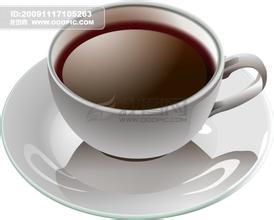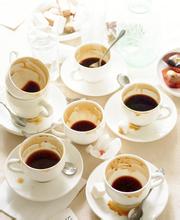Introduction of Coffee Bean Origin and Variety introduction of Fine Coffee Muscat Coffee Bean Flavor and Taste Manor
Arabica Coffee (Coffee Arabica)
(1) flavor characteristics
▌ Arabica coffee has a varied and broad potential flavor. Arabica coffee produced in different regions, different elevations and different climatic areas usually has its own characteristics. It smells like grass when it is not roasted. After proper roasting, it shows fruity (medium-light roasting) and caramel sweet (deep roasting).
(2) Market price and use
▌ 's fine Arabica coffee requires complicated manual picking, selection and meticulous processing, so Arabica coffee is the most expensive and best coffee bean in the world.
2. Robsta Coffee (Coffee Robusta)
(1) flavor characteristics
▌ robusta coffee is commonly known as thick and strong beans, and its flavor is usually ordinary and rigid. The flavor produced by different regions and different climates is not very different. It smells like raw peanuts when it is not roasted. The taste after baking is usually between wheat tea (medium baking) and rubber tire flavor (deep baking), so it is difficult to show meticulous flavor.
(2) Market price and use
▌ robusta coffee is usually used to make instant coffee and canned coffee because of its low cost. A small number of better quality robusta coffee are also used in blending (mixed with Arabica coffee) espresso beans. In addition, Robusta coffee contains about twice as much caffeine as Arabica coffee, which is why drinking canned coffee is more likely to cause palpitations and insomnia.
3. Liberian coffee (Coffee Liberica)
▌ is native to the lowland forests of Liberia on the west coast of Africa, widely planted in tropical low-altitude areas, evergreen trees, up to about 10 meters high, with extended branches. Leaves thick leathery, large, elliptic, Obovate-elliptic. The flowers are white and the fruit is few. Generally, there are only 6 flowers in a section. The fruit is large and reddish when ripe, with a hard and thick rind and pulp. The main root is thick and long, drought resistance, wind resistance, cold resistance is strong, but disease resistance is weak, the most likely to be infected with leaf rust. The product has a strong and hot taste, strong irritation and poor quality. There is a small amount of cultivation in Hainan Island, China (1) exported to Hong Kong.
The shipping route of ▌ can be known from the name of the port of exit marked. Coffee from the same origin or the same brand has a certain route, so it is also exported from the same port. For example, if the label is Brazil-Santos, it means that this is coffee exported from Santos. With the exception of those marked "Mocha". After some Yemeni coffee leaves the port, it still uses the port name of Mocha (Mocha-Madari). In addition, Ethiopian coffee is also called "Haramoka".
(2) original species name and variety name
▌ only coffee produced in countries such as Arabia will be omitted, but if Arabica and Robusta seeds are shipped, the variety name will be marked under the country name. For example: Camelon-Arabica, Uganda-Robsta and so on. In addition, there are Mendonobo, Bloomeng and other varieties marked.
(3) the name of Shan Yue
▌ Blue Mountain (Jamaica), Mount Jiayu (Indonesia), Mount Clara (Costa Rica), Mount Kilimanjaro (Cuba), Mount Kilimanjaro (Tanzania), Mawendohagen (Papua New Guinea) are all famous brands.
(4) name of exporter
▌ indicates the ship that exported the coffee beans, the name of the exporter, etc.
2. Specifications and grades
At present, each producing country of ▌ has its own independent standard. The most commonly adopted criteria are as follows:
(1) washing type and non-washing type
▌ washing type: in the sink, after rubbing with water and utensils, the pulp and gum are removed and dried, which is called water-washed coffee beans with uniform quality.
▌ non-washing type: after the sun is naturally dried, the pulp and peel is removed by a sheller, and its quality is unstable.
(2) flat beans and round beans
The fruit of ▌ coffee is made up of two oval seeds opposite each other. The connecting side of each other is a flat joint, which is called flat bean. But there is also a round seed called a round bean, which tastes no different. Ripe and red coffee cherries have multiple structures. In the middle is the predecessor of the coffee bean, the light green seed.

Important Notice :
前街咖啡 FrontStreet Coffee has moved to new addredd:
FrontStreet Coffee Address: 315,Donghua East Road,GuangZhou
Tel:020 38364473
- Prev

Rich and refreshing Tanzanian fine coffee bean flavor taste Manor introduction
After moderate or moderate baking, there is a strong aroma, and then ground into fine powder, add boiling water to soak a pot, call friends to sit around to taste, suddenly feel aromatic overflowing, mouth fluid, its quality is much better than the instant coffee we often drink. Tanzanian coffee has long been loved by Europeans and ranks among the famous brands. Europeans give Tanzania coffee gentleman's distinction
- Next

Peruvian Coffee Flavor taste Manor production area introduction of Peruvian organic coffee boutique coffee beans
Peruvian coffee beans are best known for their coffee beans from Chimacha Mayou in the middle and Cusco in the south. In addition, some areas in northern Peru also produce characteristic organic coffee. Organic coffee is made of beans grown in the shade of trees. Although the yield of coffee beans is not high because of the method of planting in the shade, its quality can reach the level of gourmet coffee. This is due to
Related
- Detailed explanation of Jadeite planting Land in Panamanian Jadeite Manor introduction to the grading system of Jadeite competitive bidding, Red bid, Green bid and Rose Summer
- Story of Coffee planting in Brenka region of Costa Rica Stonehenge Manor anaerobic heavy honey treatment of flavor mouth
- What's on the barrel of Blue Mountain Coffee beans?
- Can American coffee also pull flowers? How to use hot American style to pull out a good-looking pattern?
- Can you make a cold extract with coffee beans? What is the right proportion for cold-extracted coffee formula?
- Indonesian PWN Gold Mandrine Coffee Origin Features Flavor How to Chong? Mandolin coffee is American.
- A brief introduction to the flavor characteristics of Brazilian yellow bourbon coffee beans
- What is the effect of different water quality on the flavor of cold-extracted coffee? What kind of water is best for brewing coffee?
- Why do you think of Rose Summer whenever you mention Panamanian coffee?
- Introduction to the characteristics of authentic blue mountain coffee bean producing areas? What is the CIB Coffee Authority in Jamaica?

